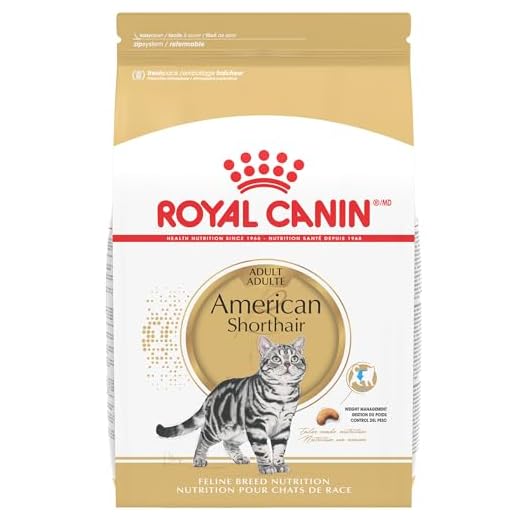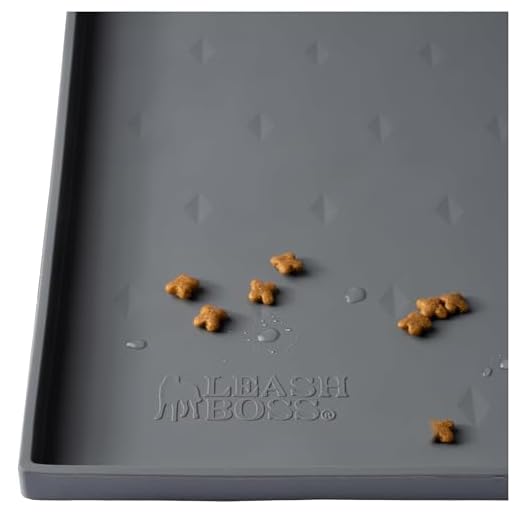



As an 8-year-old Scottish Fold, I’ve observed a curious behavior among my fellow felines: the instinct to conceal meals. This action stems from a deep-rooted survival instinct, inherited from our wild ancestors who needed to hide their leftovers from potential predators. Protecting food ensures we can return to it later without the risk of losing it to competing scavengers.
When I attempt to cover my leftovers, I engage in a ritualistic display. Scratching at the ground or using my paws to push surrounding materials mimics the actions of my ancestors. This behavior is not just about hiding; it’s also a way of marking territory. The residual scent left behind serves as a signal to others: this space is claimed, and what remains is mine.
For those who share their homes with us, understanding this instinct can enhance your bond. Providing an environment where I feel safe to eat without interruptions can reduce this behavior. A quiet, designated feeding area, away from the hustle and bustle, allows for more relaxed dining experiences. If you notice me covering my meal, it’s simply my way of ensuring I have enough for later.
Instinctual Behavior: Understanding Feline Ancestry
To truly comprehend the actions of our kind, it’s essential to examine our roots. Ancestral behaviors play a significant role in shaping daily habits, including those related to meal management. The instinct to conceal leftovers stems from survival tactics developed over generations. In the wild, hiding surplus sustenance prevents scavengers from discovering it and ensures access to nourishment later.
Survival Mechanisms in Ancestry
Ancestors of modern breeds exhibited various methods to secure food sources, often driven by instinctual responses to environmental pressures. Concealing remnants not only safeguarded resources but also signaled to potential competitors that a territory was occupied. This behavior has been observed in solitary hunters, where food acquisition and preservation were critical for survival.
Modern Implications
In contemporary domestic settings, these primal tendencies manifest in playful actions, such as pawing at food or attempting to cover it. Understanding these instincts helps us cater to our furry friends more effectively. Providing high-quality nutrition is paramount. For instance, exploring the best food for domestic shorthair cats ensures that their needs are met, reducing the urge to engage in instinctual burying behavior.
| Behavior | Reason |
|---|---|
| Hiding food | Protecting resources from competitors |
| Pawing at surroundings | Instinctual display of territory marking |
| Covering remnants | Preserving food for future access |
Territorial Marking: How Felines Communicate Through Food
Establishing dominance and marking territory happens through various methods, including meals. Food is not just sustenance; it’s a statement of ownership. When I alter or conceal my meal, I’m asserting my space and indicating that this area belongs to me.
Body Language and Food Interaction
Observing my interactions with food provides insights into my emotions and intentions. Here are a few behaviors to note:
- Scratching around the food bowl signifies a need to claim the area.
- Pawing at the dish may indicate displeasure or a desire to cover it up.
- Eating quickly and then retreating suggests I’m protecting my meal from potential competitors.
Impact on the Environment
This behavior can also affect my surroundings. By moving or covering the food, I communicate to others that I’m not just a guest in this space; I’m a resident with rights. The act of covering food is not only about hiding it but also about sending signals to other creatures about my presence and status.
As a fun aside, if you ever find yourself in need of a quick meal, check out this guide on how to cook pizza in cast iron skillet. It’s a great way to enjoy a delicious treat while I focus on my food rituals!
Food Preservation: The Role of Burying in Natural Habitats
Hiding leftovers serves a vital purpose in the wild. It protects the remnants from scavengers and ensures a potential meal for later consumption. Many species engage in this behavior to maintain a food supply, especially in environments where resources fluctuate.
Survival Strategy
Stashing uneaten morsels helps manage scarce resources. In the wild, competition for sustenance is fierce. By concealing portions, animals can revisit them when food is less available. This instinct has been passed down through generations, ensuring survival in challenging conditions.
Environmental Adaptation
Different habitats influence how food is stored. In arid regions, for instance, the act of covering meals can prevent spoilage from heat and direct sunlight. In contrast, wooded areas may have different concealment techniques, utilizing natural camouflage to hide provisions effectively.
Understanding these behaviors highlights the connection between instinct and environmental demands. Each action contributes to the ongoing struggle for survival, showcasing the remarkable adaptability of various species.
Stress and Anxiety: Can Burying Food Indicate Emotional Distress?
Finding a spot to hide a meal often signals discomfort or unease. This behavior can stem from various stressors in the environment. Changes in routine, new pets, or loud noises can trigger anxiety, prompting the instinct to conceal what one perceives as a valuable resource.
Signs of Distress
Observing additional behaviors can provide insights. Frequent hiding, excessive grooming, or changes in appetite may accompany food concealment. These actions often reflect a need for security. Monitoring these signs is crucial for understanding emotional states.
Creating a Comfortable Environment
To alleviate stress, ensuring a peaceful space is key. Providing secluded areas for relaxation, maintaining routine feeding times, and reducing loud disturbances can help. Engaging in interactive play also contributes positively to emotional well-being, fostering confidence and reducing anxiety.
Feeding Environment: How Surroundings Influence Burying Habits
Choosing the right spot for meals is crucial. A quiet corner, away from high traffic areas, often encourages the instinct to conceal leftovers. If surroundings are chaotic or noisy, it can trigger a desire to hide uneaten portions, as a form of self-preservation.
Lighting plays a significant role too. Dimly lit areas may create a sense of security, promoting the behavior of covering remnants. On the other hand, bright, open spaces may discourage such actions, as they lack the sheltering comfort that encourages hiding.
Additionally, the presence of other pets affects this behavior. If a rival animal is around, it’s common to see a tendency to ‘stash’ meals, as a protective measure against potential theft. This instinct is deeply rooted in the need to ensure access to nourishment without interference.
Environmental scents also matter. Strong odors from other animals or food can provoke anxiety, leading to hiding. Opting for a feeding area that minimizes these distractions can foster a calmer atmosphere, reducing the likelihood of needing to cover uneaten items.
Finally, the type of surface where meals are served impacts behavior. Soft, textured surfaces may encourage the act of digging and hiding, while smooth, hard surfaces might not evoke the same response. Creating a comfortable dining environment can enhance meal enjoyment and influence hiding habits.
Owner Interventions: What to Do If Your Cat Buries Food
First, observe closely. If I consistently hide my meals, take note of my eating habits and preferences. This helps understand my behavior better.
Assess the Environment
Examine the surroundings where I dine. A calm and quiet space encourages me to consume my meals without distractions. Consider the following:
- Remove loud noises or sudden movements.
- Provide a designated eating area free from competing pets.
- Ensure adequate lighting for comfort.
Adjust Feeding Practices
Modify how and when I receive meals. Some adjustments include:
- Offering smaller portions more frequently.
- Using interactive feeders to stimulate my instincts.
- Switching to high-quality, appealing options if I seem uninterested.
Lastly, keep an eye on my emotional state. If I appear anxious or stressed, consult with a veterinarian for advice. Changes in behavior might signal underlying issues requiring attention.










